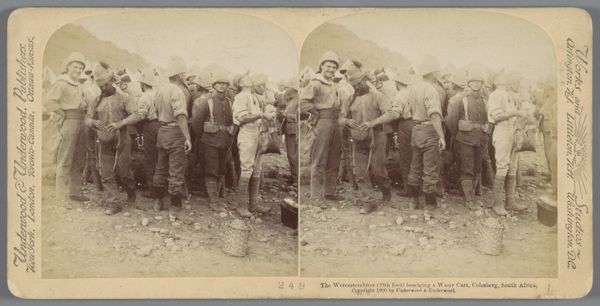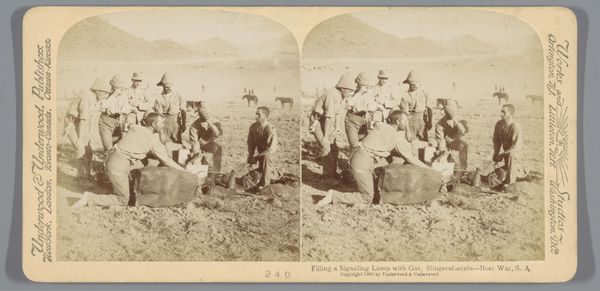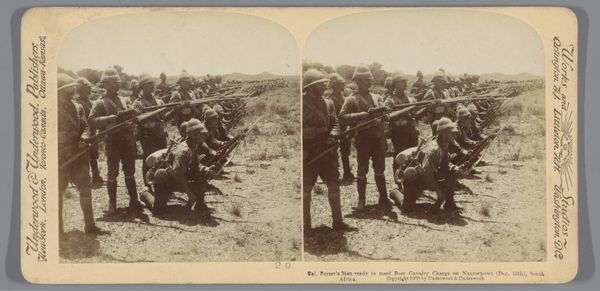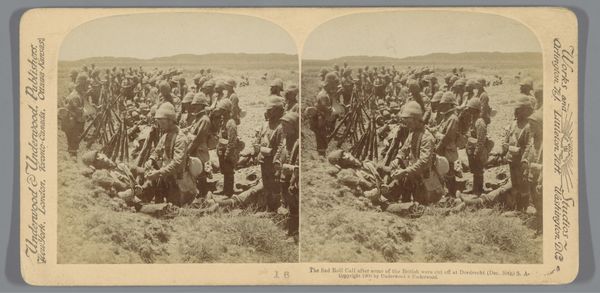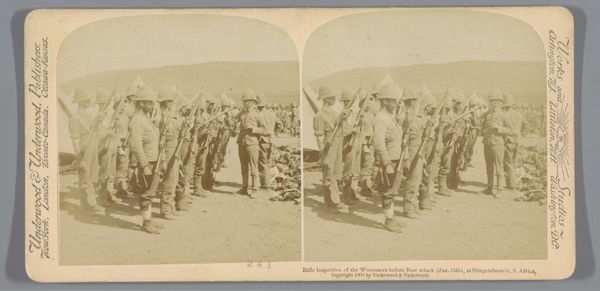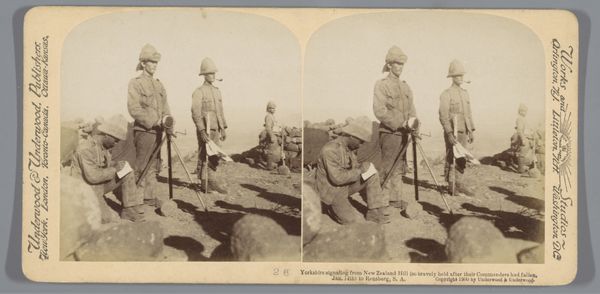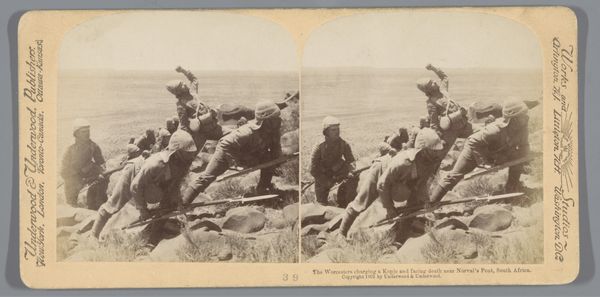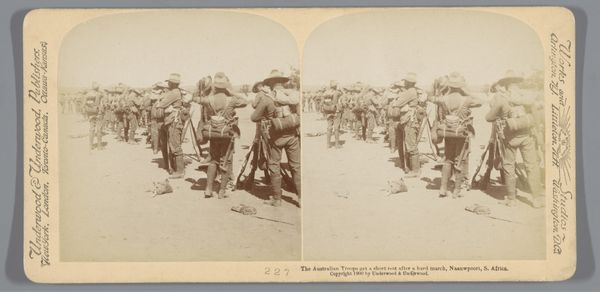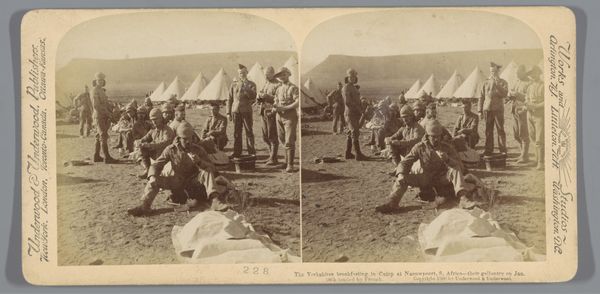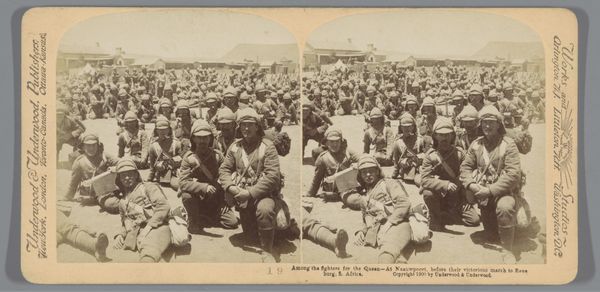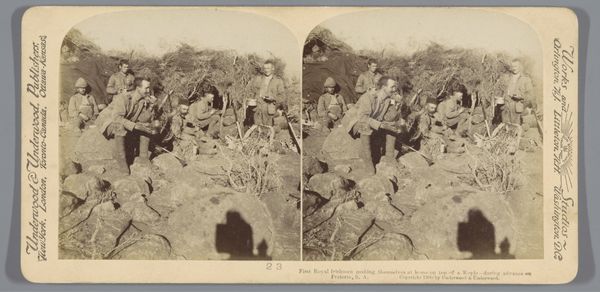
Dimensions: height 88 mm, width 178 mm
Copyright: Rijks Museum: Open Domain
Editor: Here we have "Het voorlezen van de dodenlijst op Nieuwjaarsdag in Colesberg," a print from 1900 by an anonymous artist. Looking at this photograph, I'm immediately struck by the weariness etched on the faces of these soldiers. It's quite a solemn moment captured. What can you tell us about the context of this image? Curator: Indeed. The solemnity you observe reflects the socio-political realities of the time. This image documents the New Year's Day ritual following a year of intense fighting, likely during the Second Boer War. Images like these, especially when mass-produced as prints, served a specific function in shaping public opinion about the conflict and projecting colonial power. How do you think images like this one might have been received back home? Editor: I imagine it evoked mixed reactions—perhaps some pride mixed with a heavy dose of grief and perhaps fueled anti-war sentiment depending on what publications presented it. Was there a specific purpose behind circulating such a photograph? Curator: Absolutely. Photography in this era had the burgeoning power to both document and manipulate perceptions of war. Disseminating images that depicted losses, while ostensibly objective, became entangled within pro-war or anti-war narratives that different actors projected onto the image itself. Consider, for example, the ways in which colonial powers frequently undercounted or simply omitted African casualties from such official tallies. How would you describe the visual language the artist utilizes? Editor: The use of grouping and centralizing of certain figure makes it looks staged and somewhat theatrical. Are my ideas in the right place? Curator: Yes! By meticulously arranging figures in such groupings within this "street" setting and its relationship to death, do you think that can create specific emotions that are not exactly captured with photograph alone. Editor: That's fascinating! It makes me rethink my initial impression. Now I realize the photo is constructed to elicit specific responses. Thanks for making that clear. Curator: Indeed. Exploring art through the lens of its socio-political role provides deeper appreciation of art's active involvement in our collective culture.
Comments
No comments
Be the first to comment and join the conversation on the ultimate creative platform.
